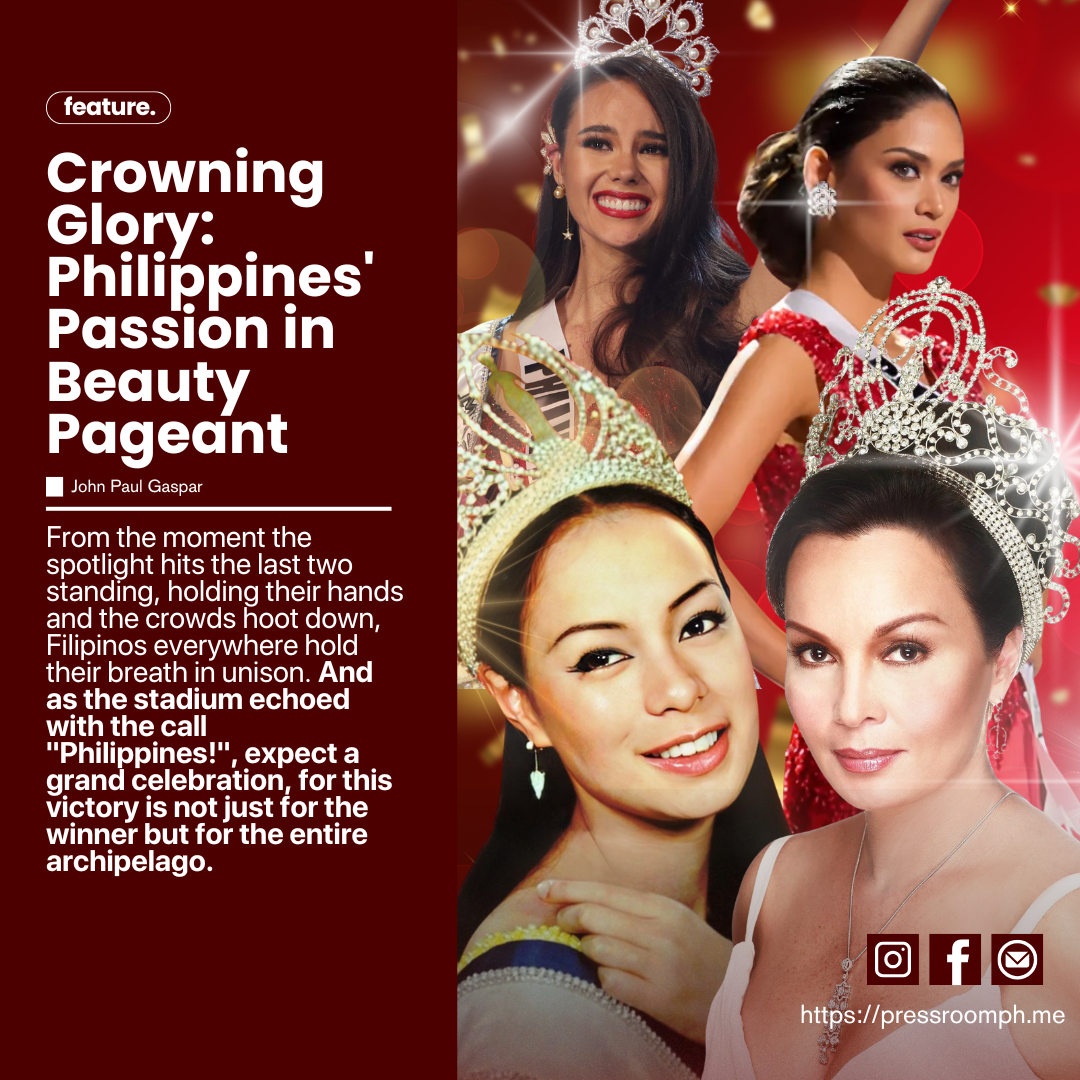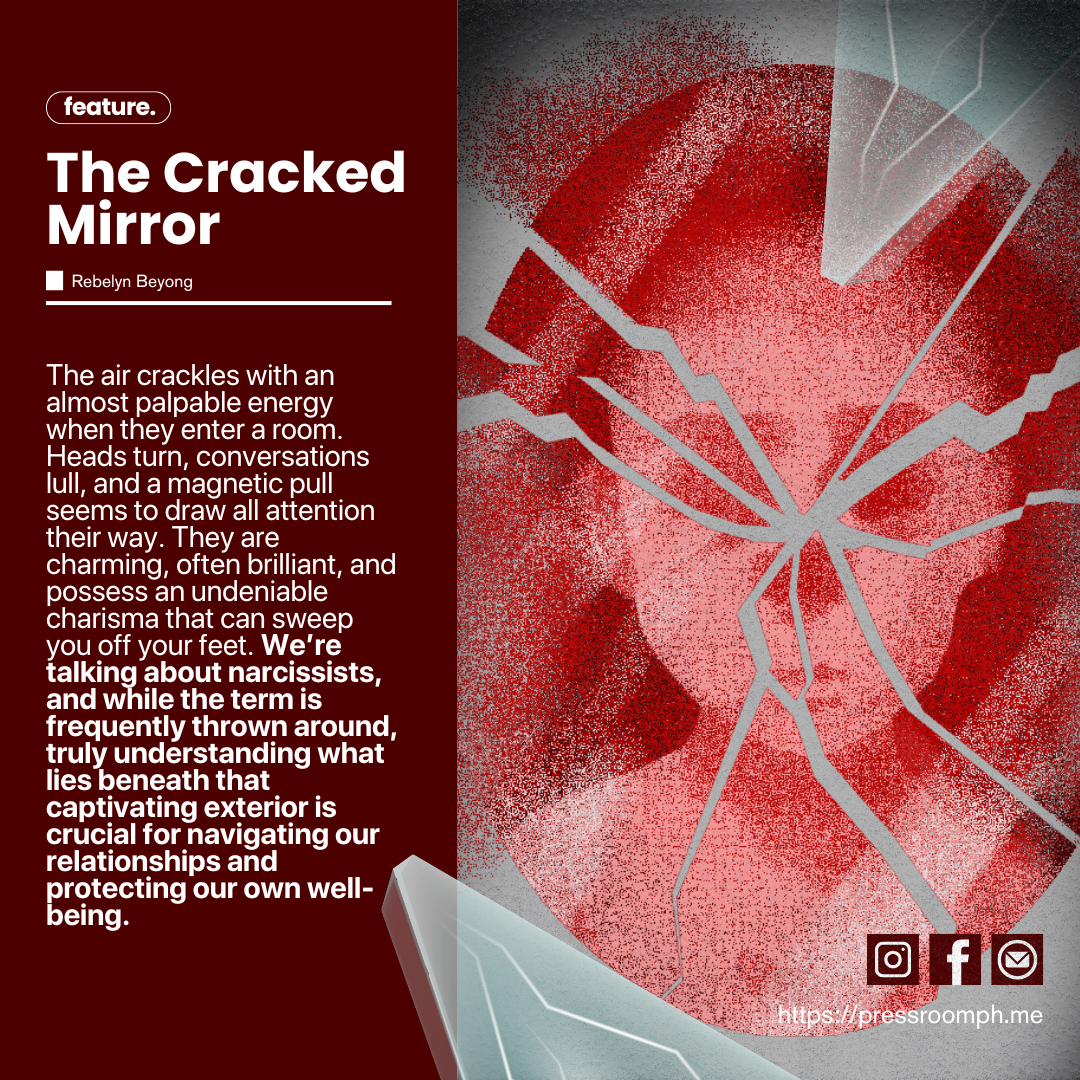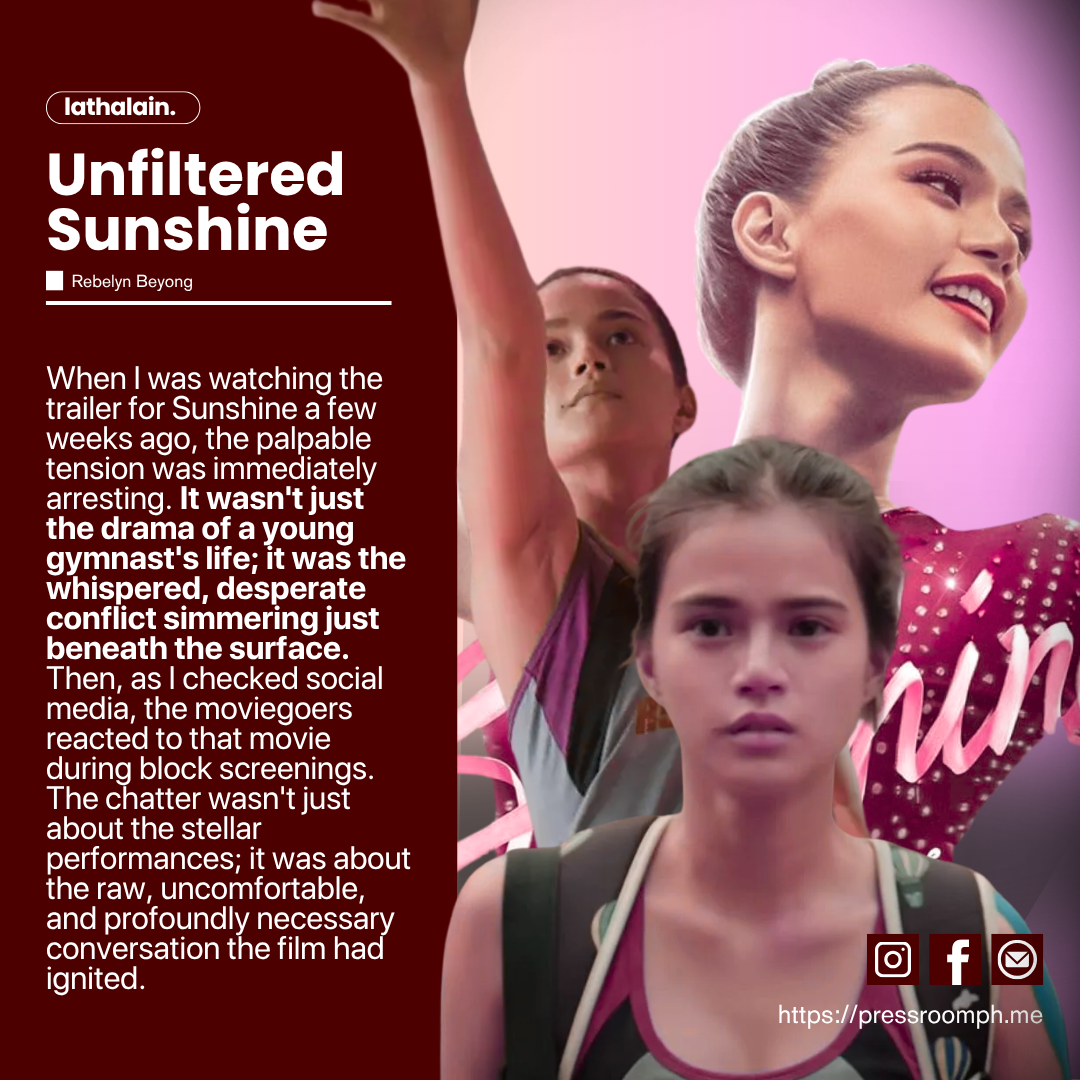via John Paul Gaspar, Pressroom PH
From the moment the spotlight hits the last two standing, holding their hands and the crowds hoot down, Filipinos everywhere hold their breath in unison. And as the stadium echoed with the call "Philippines!", expect a grand celebration, for this victory is not just for the winner but for the entire archipelago.
In the Philippines, the love for beauty pageants is more than just a pastime—it is a significant part of the culture and national identity. From small local contests in barangays to prestigious international competitions; pageantry continues to bring joy, hope, and pride to millions of Filipinos.
Generation of Queens
The Filipino passion for pageantry has deep historical roots dating back to the Spanish and American colonial periods. During the Spanish era, wealthy families would enter their daughters in contests to secure advantageous marriages. When the Americans came, the Manila Carnival Queen was introduced in 1908 as part of celebrations marking the friendship between the Philippines and the United States.
Pura Villanueva Kalaw, the first Manila Carnival Queen, crowned in 1908, is a symbol of Filipina wit and beauty. Since then, celebrating beauty and intellect through pageants has become ingrained in Filipino culture.
Now, the Philippines is one of the most successful national pageant in the whole world. The longest national pageant in the country, Binibining Pilipinas, starts and continues its legacy in producing caliber and world class beauty just like Mutya Datul who became the first and only Miss Suprational from the country. BBP chairman, Madam Stella Marquez Araneta, was also a product of the beauty pageant. She won as the first ever Miss International representing her then country Colombia, later married to Jorge Araneta, lived in the Philippines, and began its way in producing exceptional Filipina queens.
Excellence in the World Stages
Filipinos don’t just love pageants—they excel at them.
According to Missosology, the Philippines produced 15 winners and ranks second worldwide in the number of wins in the "Big Four" international beauty pageants: Miss Universe, Miss World, Miss International, and Miss Earth, tied with the United States and second only to the country of Venezuela with 24 crowns.
Victories by Filipinas such as Gloria Diaz (Miss Universe 1969), Margie Moran, Megan Young (Miss World 2013), Pia Wurtzbach (Miss Universe 2015), Kylie Verzosa (Miss International 2016) and Catriona Gray (Miss Universe 2018) have inspired millions, offering hope amid the challenges of poverty and development.
Redefining Beauty Beyond Looks
For many Filipinos, pageantry is a way to escape life’s difficulties and celebrate. Local pageants in communities serve as bonding events, while national and international competitions foster unity and a strong sense of national pride. Supporting a favorite candidate is akin to rallying behind a sports team, bringing joy and a shared sense of achievement.
Pageantry in the Philippines values more than physical appearance. It emphasizes intelligence, advocacy, and the ability to inspire. Beauty queens often become voices for important causes such as education, environmental protection, and women’s rights. The Filipino love for pageantry reflects a desire to see their fellow citizens succeed on the global stage—not just in beauty but in intellect and compassion.
The Filipino passion for pageantry is a product of history, culture, and national identity. It is a vibrant tradition that continues to inspire, unite, and give hope to Filipinos everywhere. The Philippines established its name in the world of pageantry through the years, showcasing the beauty and brilliance of the Filipino people to the world.
Every crown won is not just an individual triumph but a victory for the entire nation.






